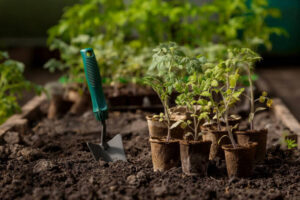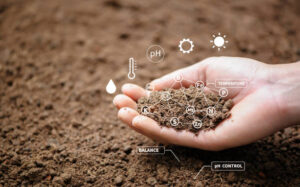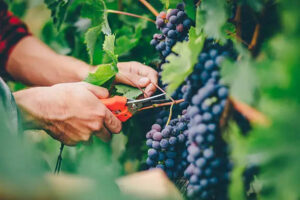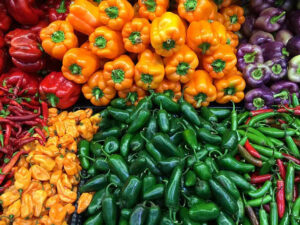Dairy farming is a critical sector of the agricultural industry that involves the raising of cattle primarily for milk, which is either sold directly to consumers or used in various dairy products such as cheese, butter, and yogurt. This complex and demanding field combines elements of animal husbandry with the intricacies of a rapidly evolving global market. This article explores the essential aspects of dairy farming, including the process of milk production, the challenges faced by dairy farmers, and the steps towards sustainable practices.
The Dairy Farming Process

1. Breeding and Rearing Dairy farming starts with breeding cows to ensure a continuous supply of milk. Farmers typically use artificial insemination to breed cows with desirable traits. After about nine months of gestation, cows give birth to calves. This event is crucial as it triggers lactation, necessary for milk production. Female calves are often raised to replace older dairy cows in the milking herd, while male calves may be raised for beef or sold.
2. Milking Cows generally begin producing milk after calving and continue to do so for about 10 months. Modern dairy farms may use automated milking systems or milking parlors to efficiently milk large herds. These systems can help manage the milking process through advanced technology that monitors the cow’s health and milk yield.
3. Housing and Feed Proper housing is critical in dairy farming to protect cows from weather extremes and ensure their health and welfare. Dairy cows are typically housed in free-stall barns that allow them to move freely. Feed is another vital aspect, with diets carefully formulated by nutritionists to ensure cows receive the necessary nutrients to stay healthy and produce quality milk.
Challenges Facing Dairy Farmers

1. Market Fluctuations Dairy farmers must navigate highly volatile markets. Prices for milk can fluctuate widely due to changes in supply and demand, influenced by global market trends, economic conditions, and policy changes.
2. Environmental Impact Dairy farming has significant environmental impacts, including methane emissions from cows, water usage, and pollution from manure. These factors contribute to climate change and environmental degradation, prompting farmers and the industry to seek more sustainable practices.
3. Animal Health and Welfare Maintaining the health and welfare of dairy cows is both an ethical obligation and a necessity for productivity. Issues such as disease, lactation problems, and living conditions can affect milk production and the overall well-being of the cows.
4. Labor Intensity Dairy farming is labor-intensive, requiring round-the-clock management to feed cows, manage the milking process, maintain equipment, and ensure the overall operation of the farm. This can lead to challenges in finding and retaining skilled labor.
Towards Sustainable Dairy Farming

1. Adopting Technology Technological advancements such as robotic milking machines, precision feeding systems, and data analytics are being used to improve efficiency, monitor animal health, and reduce waste.
2. Environmental Management Practices Many dairy farms are implementing better manure management systems, adopting renewable energy sources, and improving feed efficiency to reduce their environmental footprint.
3. Animal Welfare Improvements Improving living conditions by providing more space, better bedding, and more engaging environments helps to ensure the welfare of dairy cows, leading to better health and productivity.
4. Consumer Engagement and Transparency Farms are increasingly engaging with consumers directly through open farm days, educational programs, and transparent marketing practices to build trust and educate the public about dairy production.

Dairy farming is a vital part of the agricultural landscape, providing essential nutrients through milk and dairy products. Despite the challenges, the future of dairy farming holds promise through innovations in technology, sustainable practices, and enhanced welfare protocols. As the industry continues to evolve, it plays a crucial role in feeding the global population while striving to reduce its impact on the planet.
Fascinating Facts
Dairy cows and the farms where they are raised are integral to agricultural communities around the world, providing milk and dairy products that are staples in many diets. Here are some interesting facts about dairy cows and dairy farming:
- Selective Breeding: Dairy cows have been selectively bred for generations to improve traits like milk production, milk quality, and efficiency in converting feed into milk. For example, Holstein cows, known for their distinctive black and white coloring, are the most common dairy breed worldwide due to their remarkable milk production capabilities.
- High Milk Production: A single dairy cow can produce about 6 to 7 gallons of milk per day. Over a typical lactation period, that amount can total more than 2,000 gallons.
- Ruminant Digestion: Cows are ruminants, which means they have a unique digestive system with four stomach compartments. This system allows them to break down tough plant materials like grass into digestible forms, making them highly efficient feed converters.
- Calf Rearing: Dairy calves are typically fed colostrum immediately after birth, which is crucial for building their immune systems. Calves are generally raised separately in calf hutches to prevent disease and ensure individual care during their early weeks.
- Sustainability Efforts: Many dairy farms are increasingly focused on sustainability. They implement practices such as manure management, methane capture for energy production, and water recycling to reduce environmental impacts.
- Lifespan and Productivity: The average lifespan of a dairy cow on a farm is about 5 to 6 years, although they can live longer. Their productivity in terms of milk yield generally peaks at around 4 to 5 years old.
- Temperature Sensitivity: Dairy cows are sensitive to heat and can experience heat stress, which significantly affects their milk production and overall health. Many farms use fans, misters, and specially designed barns to keep cows cool during hot weather.
- Milking Technology: Modern dairy farms often use advanced milking technologies such as robotic milking systems, which allow cows to be milked automatically with minimal human supervision. These systems can also monitor cow health and milk quality.
- Nutrition Focused: Dairy cows have diets that are meticulously formulated by animal nutritionists to optimize health and milk production. Their feed is a combination of forages, grains, protein sources, and supplements that provide a balanced intake of nutrients.
- Economic Importance: Dairy farming is a significant economic activity in many rural communities. It not only supports farmers and their families but also contributes to local economies through employment opportunities in related industries such as feed production, veterinary services, and dairy processing.
These facts highlight the complexity and importance of dairy farming, reflecting both the challenges and innovations that characterize this vital part of the agriculture sector.










